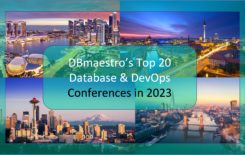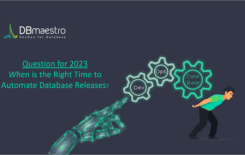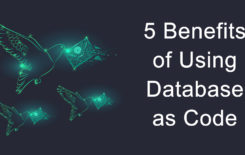Container Orchestration Software Overview
Container orchestration platforms are a set of tools that any organization that operates at scale will need. Container orchestration systems are necessary to handle large numbers of containers and services, but also to realize the benefits of CI/CD.
Let’s examine container orchestration technologies to understand why they are a must for any large and/or growing development operation. We will also briefly examine three types of leading container orchestration software: Docker Swarm, Kubernetes, and AWS. Then we’ll discuss how container orchestration platforms relate to one of our favorite topics, DevOps for databases.
Container Orchestration Definition
Before defining container orchestration, we should talk about containers.
Containers enable software to move between environments. They include the application, its dependencies, configuration files, libraries, and other binaries, all put together in one package. By using containers, software should work even when deployed in different development language versions, SSL libraries, and operating systems.
But when scalability is required, container orchestration solutions must come into play, particularly when CI/CD is in effect. Operating at scale means automation, and it’s just not possible to use potentially hundreds of containers without a container orchestration platform.
Container orchestration software permits container lifecycle management, particularly in large and constantly changing environments. Teams employ container orchestration systems for the automation of numerous tasks, from provisioning and deployment to load balancing and performance monitoring.
The Application of Container Orchestration Technologies
Container orchestration systems are applied through three basic phases.
The first step in using container orchestration platforms is to set configurations. Container orchestration software, such as Docker Swarm and Kubernetes, is initiated by asking the user to delineate precisely where container images are located in the system.
The user will also set parameters for how container orchestration systems should set up networking between containers, arrange storage volumes, and store logs for specific containers. During this stage, the configuration files for the container orchestration solution will undergo branch and version control processes in order to deploy the same applications in various development and testing environments before they are applied to production.


The next step in preparing the container orchestration platforms is to deploy containers (mostly in replicated groups) to their respective hosts. Whenever a new container is required for cluster deployment, the container orchestration system schedules the event and identifies the correct host, depending on certain conditions. One of the many advantages of container orchestration solutions is the number of conditions that can be set in this situation, including placement of containers according to CPU limits, metadata, user-defined labels, and memory availability.
Finally, once the container is up and running, container orchestration technologies will manage the lifecycles of the relevant containers according to the configuration settings made during the first step.
Container Orchestration Platforms – Coming Soon to Your Shop
According to a September 2018 report, container orchestration market revenue is expected to reach USD 743.3 million in 2023, signifying a compound annual growth rate of 17.9% between 2018 and 2023.
With the enormous growth of container usage, container orchestration solutions are greatly increasing in popularity. Containers can be supported in practically any type of environment, ranging from on-premise servers to the cloud. And speaking of the cloud, let’s examine three of the most popular container orchestration technologies: Amazon ECS, Kubernetes, and Docker Swarm.
AWS Container Orchestration
AWS container orchestration is officially known as the Amazon Elastic Container Service and is one of the leading container orchestration platforms. The AWS container orchestration system is relatively complicated and provides seamless integration between containers and other AWS services. Amazon ECS is compatible with Docker and enables running containerized applications on EC2 instances. AWS container orchestration is also fully managed, includes support, and does not require additional software for companies already using AWS.
Kubernetes Container Orchestration
Kubernetes is an open-source Google initiative to automate deployment, scaling, and management of containerized applications, and is backed by the Cloud Native Computing Foundation. Kubernetes is projected to become the leading container orchestration system by 2025. It functions well with most operating systems and enables easy service organization with pods. However, Kubernetes installation is known to be quite complex, while users will need to use an additional set of tools for management functions.
Docker Container Orchestration
Docker container orchestration technology, Docker Swarm, extends single-host Docker, which permits developers to deploy multiple containers and microservices in a rapid and simple manner. Docker container orchestration software is very easy to transition, lightweight, and simple to use, particularly for those already employing the Docker Engine. Docker Swarm also enables rapid container deployment and scaling, even for large clusters.
Container Orchestration Systems and the Database
We’ve done a short review of Docker container orchestration, Kubernetes, and AWS container orchestration, and there are a variety of other container orchestration technologies that you should consider evaluating. However, no matter which one you choose, it is essential to ensure that the database is included when using container orchestration systems.
To minimize risk to releases and prevent database failure, developers need a tool to manage database changes and detect versions across environments. Even if the database is instantiated from a container, it is crucial to apply all development changes to the database and assess the database version that the container is presenting. This is a complicated process, particularly at scale.
That’s where DBmaestro adds serious value. DBmaestro provides the final link in the chain to connect container orchestration platforms to the database in the most effective way. So, if you’re looking into container orchestration systems, don’t forget the database – contact DBmaestro today to discover how.






